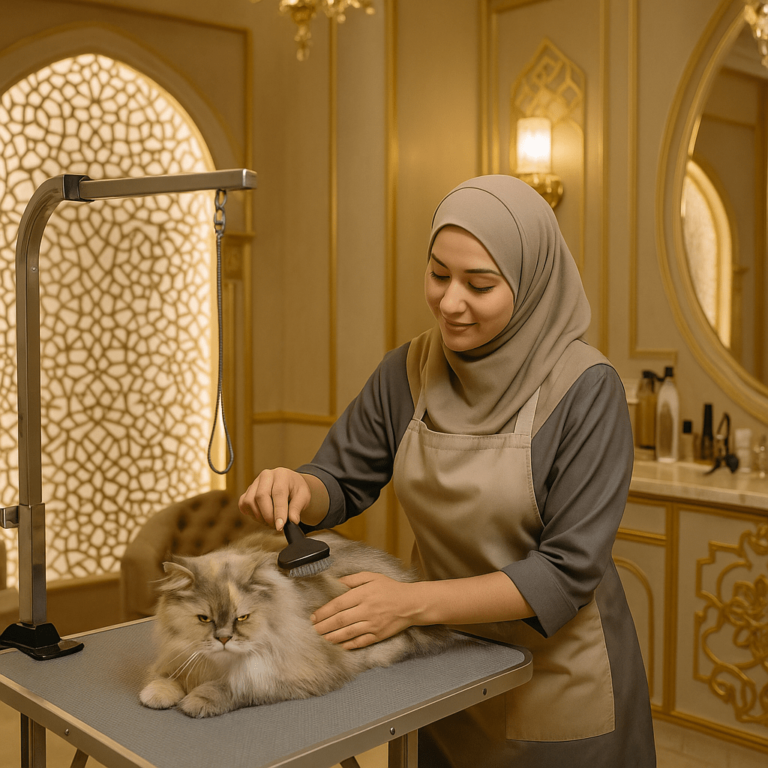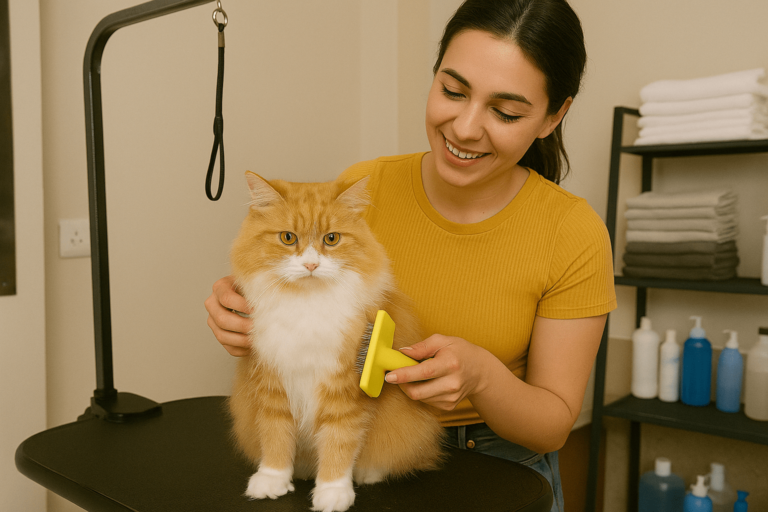
While riding in a car with your pet might be a fun experience for both of you, it can also provide difficulties. Many animals get nervous or uncomfortable in the car, whether it’s for a trip to the veterinarian, a visit to the park, or a vacation. Appropriate training guarantees that these rides will be more fun and less taxing for your pet as well as for you.
This guide will coach you through necessary actions to teach your pet for car rides, lower anxiety, and ensure every trip is safer and more fun.
Why Do Dogs Not Like Car Rides?
It’s important to know why certain pets find car journeys objectionable before starting the training process. There are numerous often shared causes:
Motion Sickness: Pets can experience motion sickness, same as people can. Nausea, drooling, and general discomfort can all follow from this.
Fear or Anxiety: Pet fear or anxiety can be brought on by car drives, particularly if they link them with unpleasant events (such as visits to the veterinarian or grooming).
Lack of Familiarity: Some dogs just haven’t been in the automobile enough to become used to the motion, loudness, and change of surroundings.
Separation Anxiety: Some dogs may get stressed when they are away from their comfortable habitat or home.
Phase 1: Start with Positive, Short Rides
Starting cautiously and making sure every car trip is a positive experience can help you start your pet’s training for automobile rides.
Start Small: Begin with short trips, even just around the block. You want to help your pet grow used to the car without overloading them.
Positive Reinforcement: Reward your pet with treats, compliments, or their preferred toy after you get home after each ride. This makes the car positively associated.
Increase Ride Length Gradually: Once your pet is at ease on short journeys, progressively stretch the ride’s length. This helps your pet grow accustomed to longer trips.
Phase 2: Design a Secure and Pleasant Environment
If a pet doesn’t feel safe, the car might be a frightening spot for them. Making sure your pet is safe and comfortable will have a big impact.
Keep Your Pet Under Control: Never let it go wild inside the car. Besides being dangerous for them, it can cause distractions for drivers. Make investments in a travel cage, pet carrier, or pet seatbelt harness.
Travel Crate or Carrier:
Some dogs find more comfort in a closed crate since it creates a den-like environment.
Ensure your pet can easily lie down, turn around, and stand in the container.
Seatbelt Harness:
Larger dogs might benefit from a seatbelt harness. It lets your pet have some room to roam while keeping them safe.
Maintain Comfortable Temperatures:
Make sure the car isn’t overly heated or cold. If the temperature is extreme, stop for fresh air during longer travels.
Feeding Schedule:
Avoid feeding your pet just before the car trip. Leave at least two-hour intervals between meals and travel to reduce nausea risks.
Phase 3: Treat Motion Sickness
Pets—especially puppies and kittens—often experience motion sickness. Here are techniques to help reduce discomfort:
Drive Smoothly: Avoid fast turns, abrupt stops, or unexpected motions. Steady driving at a regular speed minimizes motion sickness.
Avoid Strong Scents: Strong fragrances like air fresheners or perfumes can exacerbate nausea. Keep the car well-ventilated.
Medication: Consult your veterinarian if motion sickness persists. They may suggest natural remedies like ginger or prescribe medications to calm your pet’s stomach.
Phase 4: Desensitize Your Pet to Cars
Desensitization is essential for pets who are nervous or afraid in the car. Gradually accustom your pet to the car environment without pressure to travel.
Explore the Car:
Open the car door and let your pet investigate at their own pace.
Allow them to explore and grow used to the interior without any pressure.
Positive Space:
Spend time sitting in the car with your pet.
Play their favorite games or bring treats inside the car to create comfort and a sense of safety.
Short, Calm Rides:
Take your pet on quick, non-stressful trips. Avoid destinations associated with negative experiences (e.g., the vet).
Phase 5: Keep Your Pet Occupied
A bored pet in the car can grow destructive or anxious. Keeping them relaxed and entertained is crucial.
Interactive Toys: Pack chew toys or puzzle toys to keep your pet busy.
Comfort Items: Bring a blanket or item that carries your scent to provide security.
Relaxing Music: Soft, calming music can create a serene environment and reduce anxiety.
Phase 6: Consistent Practice is Crucial
Like any other training, success depends on consistency. Continue taking your pet on car rides, even for short trips to familiar places like a park or pet store. The more accustomed your pet becomes, the more relaxed they’ll feel.
Phase 7: Consider Professional Pet Taxi Services
For additional support, consider using a professional pet taxi service. These services are especially helpful for pets that are particularly anxious or for long-distance travel. Pet taxis are managed by experienced professionals who ensure safety and comfort during the journey.
Phase 8: Patience is Key
Every pet is different, and some may take more time to adapt to car rides. Patience is essential. Celebrate small milestones and don’t get discouraged if progress is slow. With consistency and positive reinforcement, your pet will eventually enjoy car rides.
Conclusion
Teaching your pet to enjoy car rides is about more than just getting them into the car. It’s about ensuring the experience is pleasant for both of you. Following these steps will help your pet overcome fears and anxieties, turning car rides into joyful experiences. Whether it’s a trip to the vet or a leisurely road trip, a well-trained and comfortable pet makes every journey safer and more enjoyable.
With practice, patience, and preparation, you can make every car ride a secure, peaceful, and fun experience for both you and your furry friend.





